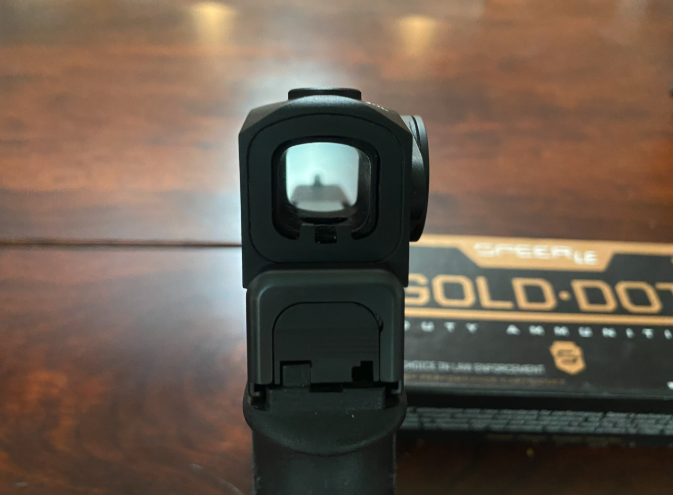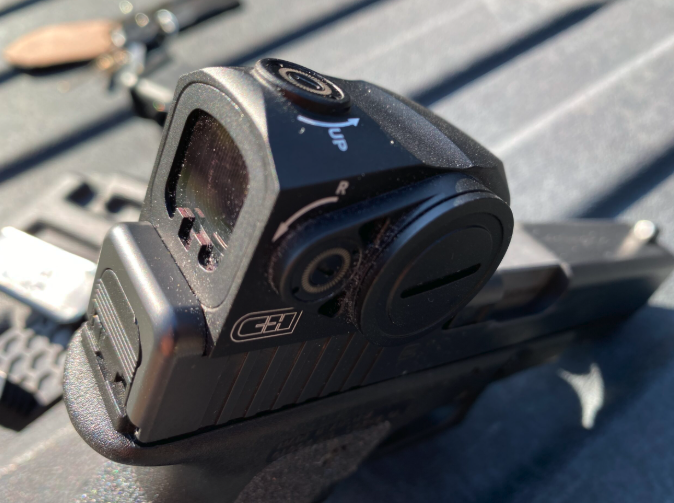Born at the tail end of the Cold War, the Glock 17 wasn’t built to be a safe queen; it was built to win. It was lighter, simpler, and tougher than anything else in the early ’80s, and it quickly proved itself in the hands of soldiers and operators who couldn’t afford failure.
While most service pistols of the era were heavy and overcomplicated, the Glock was different. It just worked; every time, in any condition.
That no-nonsense design made it a favorite among elite units worldwide, from Europe to U.S. Special Operations. It didn’t chase trends or rely on tradition; it defined what a modern fighting pistol should be. Four decades later, my Gen 3 Glock 17, slide milled for a C&H Duty Optic and fitted with a Wilson Combat match barrel, carries that same DNA: simple, reliable, and ready for anything.
Cold War service and early special-forces adoption
During the late Cold War, the Austrian military put it into service, and SOF units in other countries soon followed. While conventional service pistols of the era, such as the Colt M1911 and Beretta 92F, remained common, the Glock’s advantages made it the choice for low-visibility roles.
Key units and usage:
- Austrian Military (P80): Adopted as the standard sidearm in 1982; the original trials requirements (lightweight, 9×19, high capacity, and simplicity) shaped the G17’s DNA.
- U.S. Special Operations Forces (SOCOM): Early adopters in covert and “low-visibility” roles, including operators in Delta and SEAL Team 6, favored the Glock 17 and 19 for concealability, capacity, and unquestionable reliability prior to any broader official adoption.
- French forces: Used Glocks across various units, including special operations elements that valued the platform’s simplicity and durability.
- British special forces: Members of units like the SAS and SBS employed Glocks in roles where concealment and minimal profile were priorities, even while conventional forces kept other service pistols.
Why special forces leaned into the Glock: it fit concealed roles, offered higher magazine capacity than many contemporaries, and delivered a durable, easy-to-train trigger system with far fewer failure points.
My Glock 17 Gen 3 Setup
This is a full-size pistol. It’s not for everyone. For my athletic “dad bod” and my holster/belt setup, the Glock 17 conceals easily under a T-shirt; your mileage will vary.
What I changed and why:
- Optic: Slide milled by C&H Precision and fitted with their Duty Optic, a closed-emitter reflex in the Aimpoint-ACRO class. This is a duty-grade optic: one-piece CNC aluminum, IPX7 waterproof, fully shockproof for +P use, featuring a 3 MOA dot that stays crisp even with mild astigmatism, ten brightness levels (two NV compatible), motion-sensing wake, and a long-lasting CR2032 battery. It’s bigger than a micro-dot, but it’s built for hard use and clear, fast acquisition.
- Barrel: Wilson Combat match barrel — drop-in, tightly toleranced, and delivers repeatable point-of-impact for shooters who train fundamentals. It tightens groups; it doesn’t hide poor technique.
- Internals: Stock Glock components only. No trigger jobs, no spring kits. Just keep what works.



Final Word
The Glock 17 was born out of Cold War necessity and was built for people who couldn’t afford to fail. It earned its reputation the hard way, in the hands of the military, law enforcement, and those who needed a sidearm they could trust their life to.
My Gen 3 Glock 17 keeps that legacy alive. Milled for a C&H Duty Optic and running a Wilson Combat match barrel, it’s proof that you don’t have to reinvent a classic to make it relevant. Forty years later, the same traits that made the original a legend still matter most: simplicity, reliability, and performance when it counts.
Where To Buy

More on the Glock 17 from TTAG:
Read the full article here





